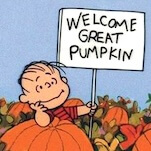The Gentle Revolution: Marc Spitz Captures the History of Twee
In writing his new book on the Twee aesthetic, Marc Spitz found himself collecting stuffed animals.
“These old fashioned stuffed animals are like $75 a piece,” he laughs. “They’re not cheap; they’re these mohair stuffed animals from the ‘50s. I started thinking, ‘Well, I don’t have a hippo. Or a lion or a monkey.’ That binge is over now that the book is done. I don’t have to go to a rehab center. I don’t even know what to do with them now, put them back on eBay, I guess.”
It’s telling how writing a book about Twee sent Spitz looking to childhood for inspiration. Twee is represented by Wes Anderson’s precocious youths who act like adults and adults who act like children, Morrissey’s miserable childhood at the hands of belligerent ghouls running Manchester schools and Holden Caulfield kicking and screaming at the adult world’s phoniness.
Still, reducing Twee to a tweet-length definition is impossible. That’s one reason Marc Spitz’s new book, Twee: The Gentle Revolution in Music, Books, Television, Fashion and Film, includes over 350 pages detailing just under 70 years of the phenomenon’s amorphous and eclectic history.
You may have a different word for this culture of bespectacled, art-obsessed precocity, and Spitz would be fine with that. “I didn’t know I would call it Twee, but I knew it was something,” he says. “Sometimes I regret calling it Twee and think there might be a better word for it, but I knew that it was something shared.”
Twee: The Gentle Revolution is a cultural history about The Diary of Anne Frank, Buddy Holly, Edward Gorey, The Bell Jar, Jonathan Richman, Pee-wee Herman, The Smiths, Belle & Sebastian, Wes Anderson and many more individuals and works of art mapping the wistful world. It’s as much about how you dress and conduct yourself as it is about the books, music and films you appreciate. Spitz saw all this and thought such a far-reaching movement had yet to receive a proper codification.
“People are into anti-cool, cardigan sweaters, nerd glasses, Belle & Sebastian,” he says. “There were dozens and dozens of things which accrued to create an aesthetic that people now understand as an aesthetic. If you take just one of those things and look at it, it’s a curiosity. But if you take all of them, it’s a way of expressing yourself, especially if you’re young. It’s a movement you can belong to like punk rock.”
-

-

-

-

-

-

-

-

-

-

-

-

-

-

-

-

-

-

-

-

-

-

-

-

-

-

-

-

-

-

-

-

-

-

-

-

-

-

-

-








































